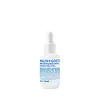What's inside
What's inside
 Key Ingredients
Key Ingredients

 Benefits
Benefits

 Concerns
Concerns

 Ingredients Side-by-side
Ingredients Side-by-side

Water
Skin ConditioningGlycerin
HumectantBetaine
HumectantPentylene Glycol
Skin ConditioningHypnea Musciformis Extract
Skin ProtectingSaccharide Isomerate
HumectantSargassum Filipendula Extract
Skin ProtectingBiosaccharide Gum-1
HumectantPanthenol
Skin ConditioningSorbitol
HumectantPhenoxyethanol
PreservativeSodium Hyaluronate
HumectantPPG-26-Buteth-26
Skin ConditioningPEG-40 Hydrogenated Castor Oil
EmulsifyingChamomilla Recutita Flower Extract
MaskingGlyceryl Acrylate/Acrylic Acid Copolymer
HumectantCaprylyl Glycol
EmollientChlorphenesin
AntimicrobialDisodium EDTA
Gelidiella Acerosa Extract
Skin ProtectingSodium PCA
HumectantCitrus Aurantium Amara Peel Oil
Skin ConditioningSodium Lactate
BufferingArginine
MaskingPelargonium Graveolens Flower Oil
MaskingAspartic Acid
MaskingSaccharomyces Lysate Extract
HumectantPCA
HumectantSodium Citrate
BufferingLavandula Angustifolia Oil
MaskingSodium Hydroxide
BufferingGlycine
BufferingAlanine
MaskingAnthemis Nobilis Flower Oil
MaskingSerine
MaskingValine
MaskingIsoleucine
Skin ConditioningProline
Skin ConditioningThreonine
Histidine
HumectantPhenylalanine
MaskingSodium Carboxymethyl Betaglucan
Benzyl Benzoate
AntimicrobialBenzyl Salicylate
PerfumingCitronellol
PerfumingFarnesol
PerfumingGeraniol
PerfumingLimonene
PerfumingLinalool
PerfumingWater, Glycerin, Betaine, Pentylene Glycol, Hypnea Musciformis Extract, Saccharide Isomerate, Sargassum Filipendula Extract, Biosaccharide Gum-1, Panthenol, Sorbitol, Phenoxyethanol, Sodium Hyaluronate, PPG-26-Buteth-26, PEG-40 Hydrogenated Castor Oil, Chamomilla Recutita Flower Extract, Glyceryl Acrylate/Acrylic Acid Copolymer, Caprylyl Glycol, Chlorphenesin, Disodium EDTA, Gelidiella Acerosa Extract, Sodium PCA, Citrus Aurantium Amara Peel Oil, Sodium Lactate, Arginine, Pelargonium Graveolens Flower Oil, Aspartic Acid, Saccharomyces Lysate Extract, PCA, Sodium Citrate, Lavandula Angustifolia Oil, Sodium Hydroxide, Glycine, Alanine, Anthemis Nobilis Flower Oil, Serine, Valine, Isoleucine, Proline, Threonine, Histidine, Phenylalanine, Sodium Carboxymethyl Betaglucan, Benzyl Benzoate, Benzyl Salicylate, Citronellol, Farnesol, Geraniol, Limonene, Linalool
Water
Skin ConditioningSodium Methyl Cocoyl Taurate
CleansingPolyglyceryl-3 Methylglucose Distearate
EmulsifyingGlycerin
HumectantAcrylates Copolymer
Glycol Distearate
EmollientSodium Hydroxypropyl Starch Phosphate
AbrasiveStearic Acid
CleansingSucrose Cocoate
EmulsifyingInulin
Skin ConditioningGlycolipids
Skin ConditioningSimmondsia Chinensis Seed Oil
EmollientSodium PCA
HumectantLactobacillus Ferment Lysate
Skin ConditioningLimnanthes Alba Seed Oil
Skin ConditioningPrunus Armeniaca Kernel Oil
MaskingGlyceryl Caprylate
Emollient1,2-Hexanediol
Skin ConditioningEthylhexylglycerin
Skin ConditioningLauric Acid
CleansingMyristic Acid
CleansingSodium Hydroxide
BufferingAlpha-Glucan Oligosaccharide
CleansingPolyquaternium-39
Caprylhydroxamic Acid
Tocopheryl Acetate
AntioxidantTrisodium Ethylenediamine Disuccinate
Propanediol
SolventLeuconostoc/Radish Root Ferment Filtrate
AntimicrobialSodium Benzoate
MaskingGlyceryl Undecylenate
EmollientSodium Hyaluronate
HumectantXanthan Gum
EmulsifyingWater, Sodium Methyl Cocoyl Taurate, Polyglyceryl-3 Methylglucose Distearate, Glycerin, Acrylates Copolymer, Glycol Distearate, Sodium Hydroxypropyl Starch Phosphate, Stearic Acid, Sucrose Cocoate, Inulin, Glycolipids, Simmondsia Chinensis Seed Oil, Sodium PCA, Lactobacillus Ferment Lysate, Limnanthes Alba Seed Oil, Prunus Armeniaca Kernel Oil, Glyceryl Caprylate, 1,2-Hexanediol, Ethylhexylglycerin, Lauric Acid, Myristic Acid, Sodium Hydroxide, Alpha-Glucan Oligosaccharide, Polyquaternium-39, Caprylhydroxamic Acid, Tocopheryl Acetate, Trisodium Ethylenediamine Disuccinate, Propanediol, Leuconostoc/Radish Root Ferment Filtrate, Sodium Benzoate, Glyceryl Undecylenate, Sodium Hyaluronate, Xanthan Gum
Ingredients Explained
These ingredients are found in both products.
Ingredients higher up in an ingredient list are typically present in a larger amount.
Glycerin is already naturally found in your skin. It helps moisturize and protect your skin.
A study from 2016 found glycerin to be more effective as a humectant than AHAs and hyaluronic acid.
As a humectant, it helps the skin stay hydrated by pulling moisture to your skin. The low molecular weight of glycerin allows it to pull moisture into the deeper layers of your skin.
Hydrated skin improves your skin barrier; Your skin barrier helps protect against irritants and bacteria.
Glycerin has also been found to have antimicrobial and antiviral properties. Due to these properties, glycerin is often used in wound and burn treatments.
In cosmetics, glycerin is usually derived from plants such as soybean or palm. However, it can also be sourced from animals, such as tallow or animal fat.
This ingredient is organic, colorless, odorless, and non-toxic.
Glycerin is the name for this ingredient in American English. British English uses Glycerol/Glycerine.
Learn more about GlycerinSodium Hyaluronate is hyaluronic acid's salt form. It is commonly derived from the sodium salt of hyaluronic acid.
Like hyaluronic acid, it is great at holding water and acts as a humectant. This makes it a great skin hydrating ingredient.
Sodium Hyaluronate is naturally occurring in our bodies and is mostly found in eye fluid and joints.
These are some other common types of Hyaluronic Acid:
Learn more about Sodium HyaluronateSodium Hydroxide is also known as lye or caustic soda. It is used to adjust the pH of products; many ingredients require a specific pH to be effective.
In small amounts, sodium hydroxide is considered safe to use. However, large amounts may cause chemical burns due to its high alkaline.
Your skin has a natural pH and acid mantle. This acid mantle helps prevent harmful bacteria from breaking through. The acid mantle also helps keep your skin hydrated.
"Alkaline" refers to a high pH level. A low pH level would be considered acidic.
Learn more about Sodium HydroxideSodium PCA is the sodium salt of pyroglutamic acid. It is naturally occurring in our skin's natural moisturizing factors where it works to maintain hydration.
The PCA stands for pyrrolidone carboxylic acid, a natural amino acid derivative.
This ingredient has skin conditioning, anti-inflammatory, and humectant properties. Humectants help hydrate your skin by drawing moisture from the air. This helps keep your skin moisturized.
Learn more about Sodium PCAWater. It's the most common cosmetic ingredient of all. You'll usually see it at the top of ingredient lists, meaning that it makes up the largest part of the product.
So why is it so popular? Water most often acts as a solvent - this means that it helps dissolve other ingredients into the formulation.
You'll also recognize water as that liquid we all need to stay alive. If you see this, drink a glass of water. Stay hydrated!
Learn more about Water